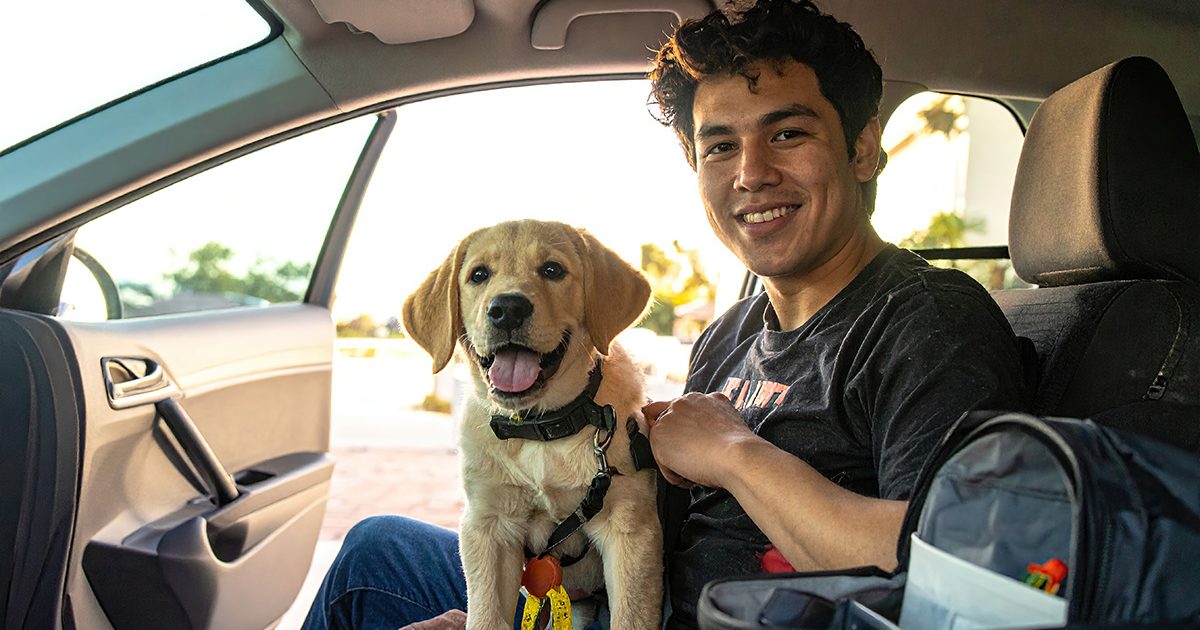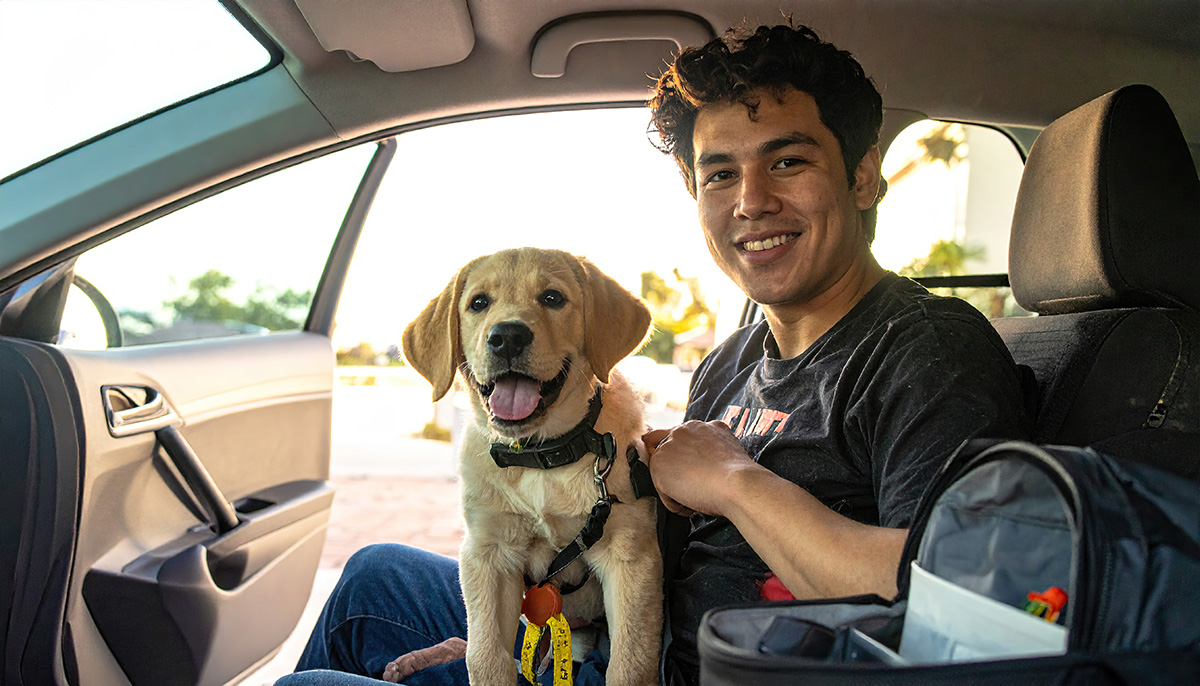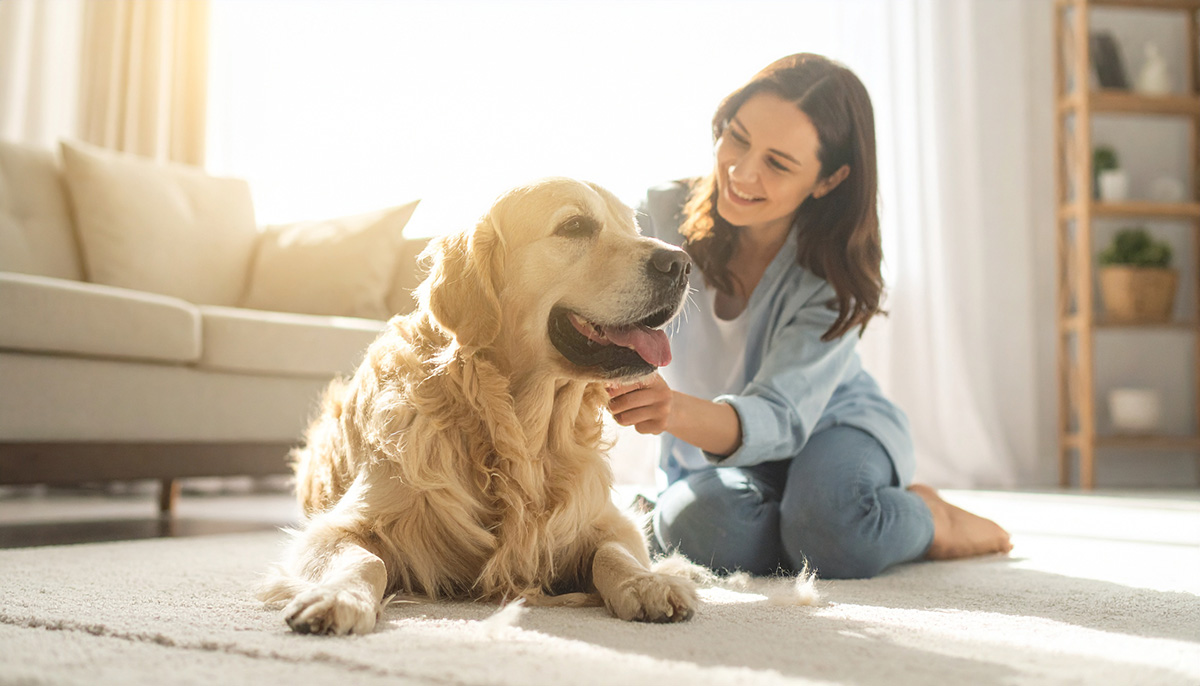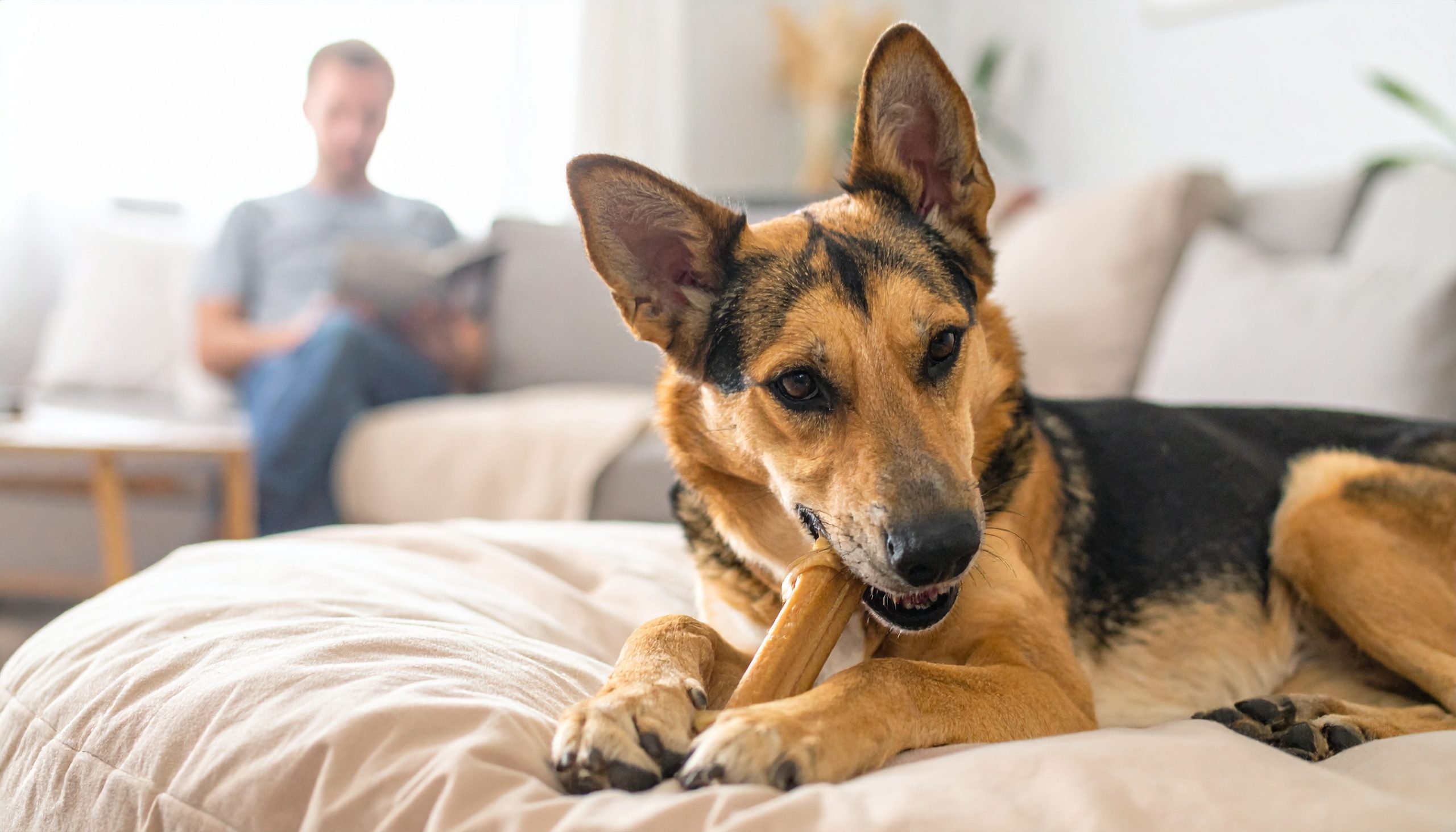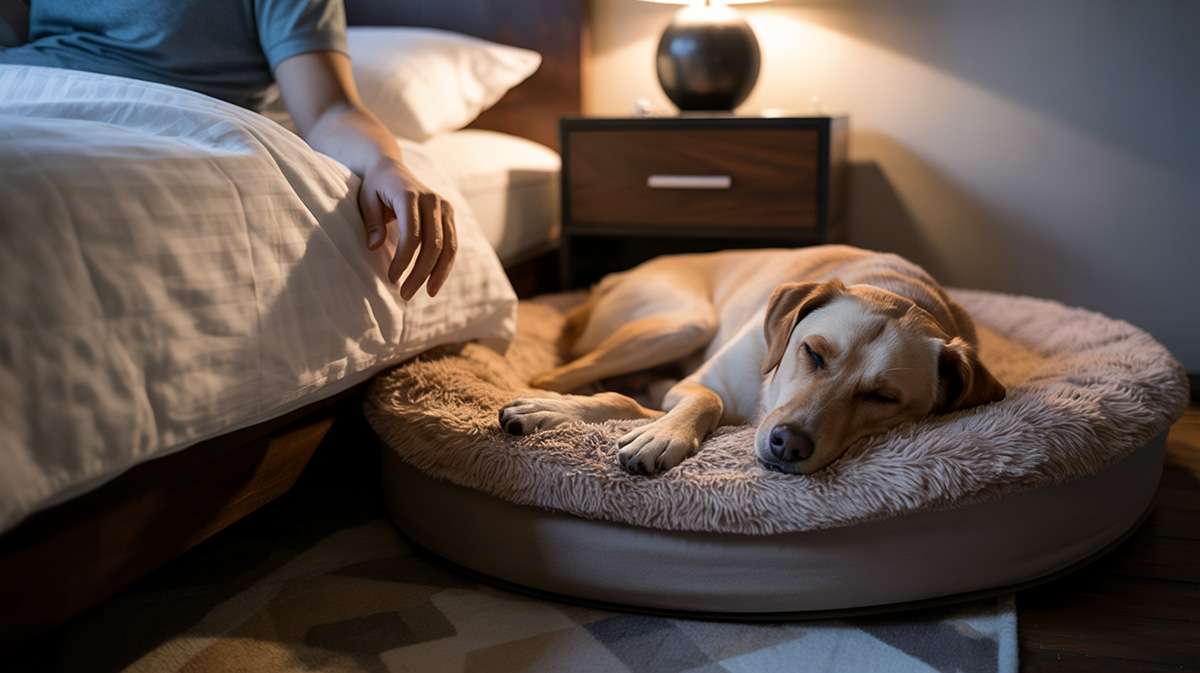How to traveling with a puppy in car
”Traveling with a Puppy in Car” The open road, your favorite playlist, and your new furry co-pilot sitting happily in the passenger seat—it’s a dream scenario for any new dog owner. But if you’ve ever actually tried to drive with a frantic, whining, or carsick puppy, you know the dream can quickly turn into a messy, stressful nightmare.
I’ll never forget my first car ride with Leo, my golden retriever puppy. At just eight weeks old, he was a whirlwind of fluff and excitement. That short drive home from the breeder felt like an epic journey, complete with a chorus of squeaks and a flurry of paws. I remember thinking, “If this is just five minutes, how will we ever survive a trip to the vet—or a real vacation?” Overwhelmed was an understatement.
But here’s what I discovered: traveling with a puppy can actually be fun. Like any new adventure, it just takes a little know-how, some planning, and a generous helping of patience. This guide is your roadmap to success—arming you with tips, tricks, and must-have gear for smooth, safe journeys. Together, we’ll cover everything from pre-trip prep to handling the unexpected, turning you from a nervous beginner into a road-trip champion. Remember: plan, prepare, practice, and savor the ride! Your puppy is more than cargo—they’re your partner in adventure, ready to explore the world by your side.
Part 1: The Foundation – Pre-Trip Preparation is Everything ”Traveling with a Puppy in Car”
You wouldn’t hit the highway without a map or GPS, so don’t start a car journey with your puppy without laying the groundwork first. A little preparation goes a long way in keeping both you and your pup calm and happy.
1. The Vet Check: Your First and Most Important Stop
Before turning on any ignition, schedule a visit with your veterinarian.
- Health Clearance: Ensure your puppy is healthy enough for travel, especially for longer journeys. Discuss any underlying conditions that might be aggravated by stress or motion.
- Vaccinations: Your puppy’s immune system is still developing. Make sure their vaccinations are up to date, particularly if you’ll be stopping at rest areas, parks, or pet-friendly hotels where other animals have been.
- Motion Sickness & Anxiety: Puppies are prone to car sickness because their inner ears are still developing. Talk to your vet about safe options. They may recommend mild anti-nausea medication or natural calming aids. Never give your puppy human medication.
- Microchipping: If your puppy isn’t microchipped yet, now is the time. It’s a permanent form of ID that can reunite you if you get separated. Ensure your contact information is registered and up to date in the database.
2. Gear Up: The Essential Puppy Travel Kit
Think of the right gear as your superhero utility belt for puppy adventures. With the right supplies, you’ll keep your pup safe, cozy, and ready to handle any little mishap along the way.
- A Secure Crate or Harness: This is non-negotiable for safety.
- Crate (The Gold Standard): A sturdy, well-ventilated crate that’s secured in the car with a seatbelt or straps is the safest way for a puppy to travel. It becomes their own den and protects them in case of a sudden stop or accident. Ensure it’s large enough for them to stand, turn around, and lie down comfortably.
- Dog Seatbelt/Harness: If a crate isn’t feasible, a crash-tested harness that clips into the seatbelt buckle is the next best option. Never use a regular collar and leash for restraint, as this can cause severe neck injury in a collision.
Puppy Potty Kit: Accidents happen. Be prepared.
- Poop bags (lots of them!)
- Paper towels or old rags
- A small bottle of pet-safe enzymatic cleaner to neutralize odors
- A roll of disposable puppy pads for emergency stops
Comfort Items:
- A familiar blanket or a piece of your old t-shirt with your scent.
- Their favorite, car-safe toy (nothing with small parts they could choke on).
Food & Water:
- Bring more of their regular food than you think you’ll need.
- A collapsible water bowl and a gallon of fresh water from home. Sudden changes in the water source can upset their stomach.
First-Aid Kit: A basic pet first-aid kit should include gauze, antiseptic wipes, tweezers, and the contact info for your vet and a national animal poison control center.
3. The Pre-Trip “Acclimation” Training: Making the Car a Happy Place
This is the secret step most new puppy parents miss. If your puppy only knows the car as the place that takes them to the vet, you can’t expect them to love it on trip day.
Begin with baby steps, keep the mood upbeat, and let patience be your guide. Little by little, you’ll turn the car into a place your puppy actually enjoys.
- Day 1: The Static Car. With the engine off, sit in the car with your puppy in your lap or in their secured crate/harness. Offer them treats, play gently, and speak in a calm, happy voice. Keep sessions short (5-10 minutes).
- Day 2: The Sounds. Do the same thing, but turn on the engine. Let them get used to the vibration and sound without going anywhere. More treats, more praise.
- Day 3: The First “Trip.” Take a drive around the block. The destination? Your own driveway. Make it the shortest, most positive journey possible. End with a fun game outside the car.
Gradually Increase Duration. Over the next week or two, gradually increase the length of your drives. Drive to a fun place, the park, a friend’s house, or a pet store where they get a new toy. This builds a positive association: Car = Fun Adventures.
Part 2: The Journey – Your Step-by-Step Road Trip Plan
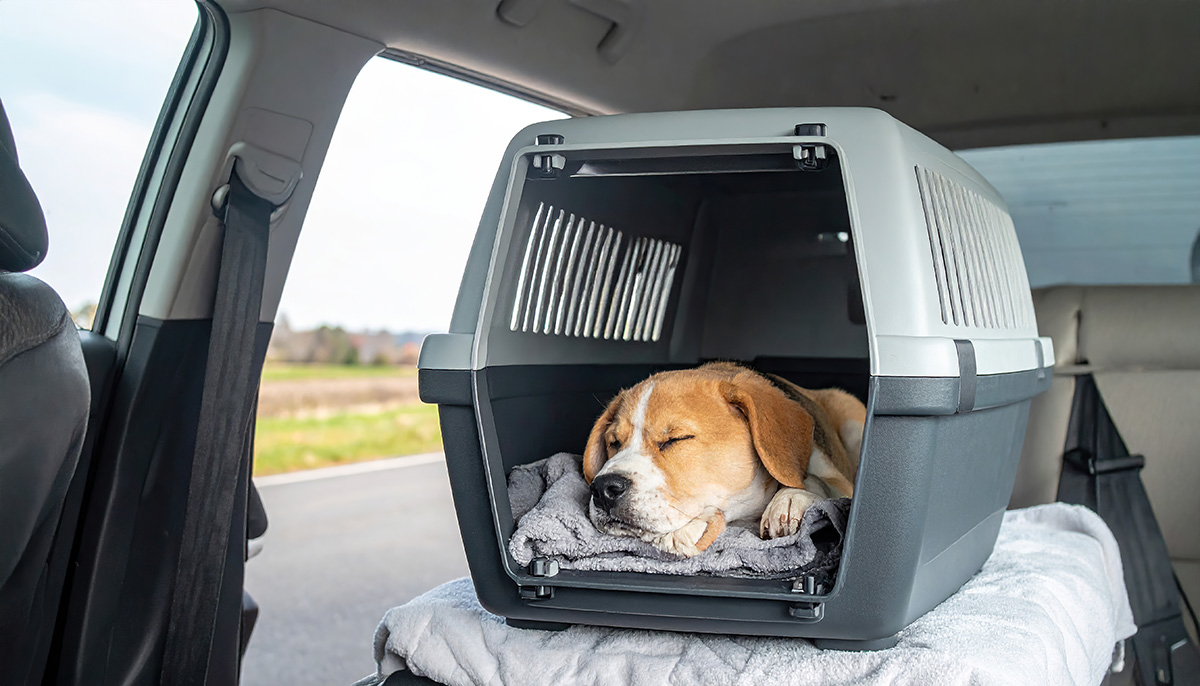
It’s trip day! You’ve prepared, you’ve trained, and you’re ready to go. The goal: create a smooth, enjoyable journey for both you and your puppy by following your plan.
1. The Pre-Drive Routine
- Exercise is your secret weapon: a tired puppy is a happy traveler. About an hour before departure, have a lively play session or take a long walk to help them burn off their wiggles. A sleepy pup makes for a peaceful ride.
- Feeding Schedule: Skip the big meal right before you hit the road. A light meal three to four hours ahead of time helps prevent car sickness. During the trip, offer tiny, bland treats to keep their tummy settled.
- The Final Potty Break: Right before you load up, take your puppy for a final, thorough potty break. Give them plenty of time to empty their bladder and bowels.
2. Packing the Car and Securing Your Pup
Load up your bags first, saving your puppy’s crate or harness for last. This way, your pup won’t get anxious or tangled up in the action while you’re packing.
Double-check that the crate is firmly strapped down or the harness is properly clipped in. The crate door should be securely latched.
3. On the Road: Driving Strategies for a Peaceful Trip
- Smooth Operator: Channel your inner chauffeur and drive with care. Gentle starts, easy stops, and wide turns will help keep your puppy’s tummy calm and the ride peaceful.
- Climate Control is Crucial: A car can become a deadly oven in minutes, even on a mild day. Never, ever leave your puppy alone in a parked car. Keep the air conditioning on or the windows cracked for a steady flow of fresh, cool air.
- The Power of Calm: Your mood sets the tone for your puppy. If you’re relaxed, they’ll feel it too. Try playing gentle music or a soothing audiobook, and keep your voice soft and reassuring.
- Managing Whining and Crying: It’s tough to hear, but don’t rush to let them out if they whimper. Wait for a quiet moment, then reward them with a gentle “Good boy” or “Good girl” and maybe a treat through the crate door.
4. Potty, Play, and Water Breaks: The Road Trip Rhythm
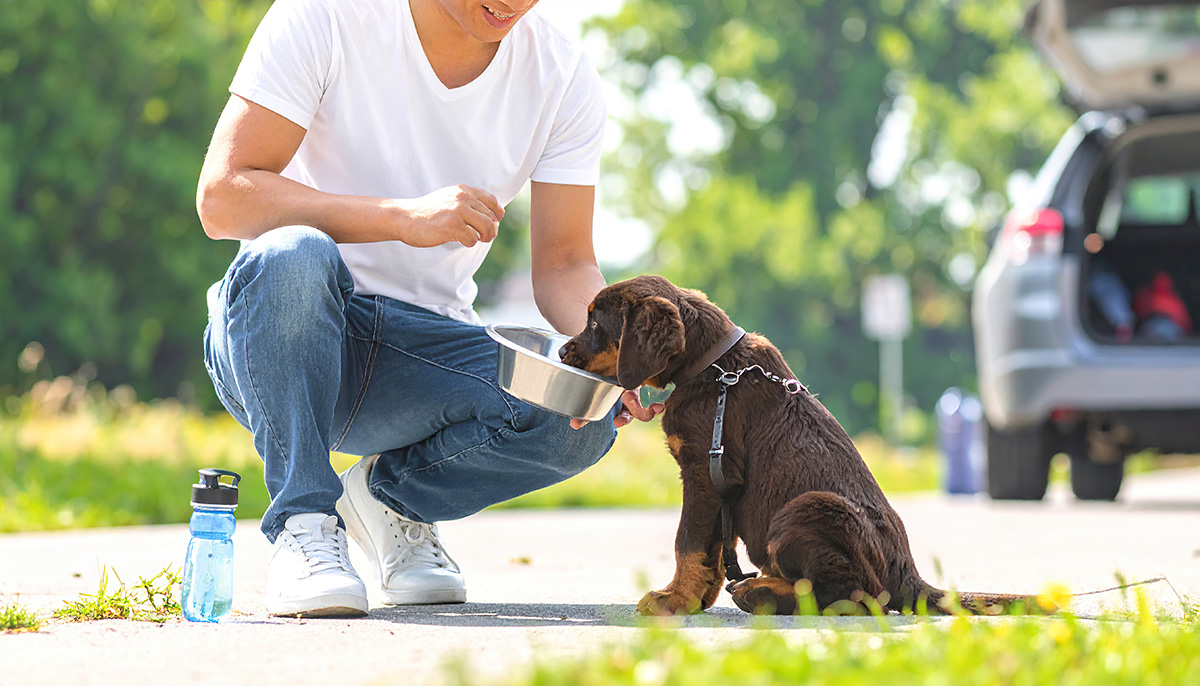
For a young puppy, a good rule of thumb is to take a break every hour for every month of age, plus one. For a 3-month-old puppy, plan a break every 4 hours.
Find Safe Stops: Look for well-maintained rest stops or large, quiet parking lots. Always have your puppy on a leash, even if you think the area is secure.
The Break Routine:
- Potty First: Take them to the potty area immediately. Use a consistent command like “Go potty.”
- Then, Hydrate: Offer them a small drink of water. Don’t let them guzzle too much.
- Finally, Play (a little): If they’ve done their business, let them walk around on the leash for a few minutes to stretch their legs. A few minutes of gentle activity can work wonders.
- Clean Up: Always, without fail, clean up after your puppy. It’s our responsibility as pet owners.
Part 3: Troubleshooting Common Road Trip Challenges
Even the best-laid plans can hit a bump or two. The secret is to stay cool and use these time-tested fixes for whatever comes your way.
1. Carsickness: The Unwelcome Passenger
If your puppy starts drooling excessively, whining, acting restless, or worse, vomiting, they are likely carsick.
What to Do:
- Stay calm. Getting upset will only increase their anxiety.
- If it’s safe, pull over. Let them out for some fresh air and to recover.
- Cover the crate with a light blanket to reduce visual stimulation, which can contribute to nausea.
- Have cleaning supplies ready. Clean up any mess with an enzymatic cleaner to remove the smell and prevent a repeat performance.
- Consult your vet about long-term solutions, like anti-nausea medication.
2. Anxiety and Fear: The Shaking, Whining Pup
Some puppies are just naturally more anxious.
What to Do:
- Calming Aids: Consider a calming spray with pheromones (like Adaptil) to spray on their blanket before the trip. There are also calming treats with ingredients like L-Theanine or L-Tryptophan (consult your vet first).
- A Comfort Item: That familiar blanket or toy you packed will be a huge source of comfort.
- White Noise: Soft, classical music or a white noise app can mask the scary sounds of the road.
- Avoid Coddling: While it’s natural to want to soothe them, excessive petting and baby-talk when they are fearful can actually reinforce the fearful behavior. Instead, project calm, confident energy.
3. The Overly Energetic Puppy: The “Are We There Yet?” Whine
This puppy isn’t anxious—they’re just bursting with energy and ready for action!
What to Do:
- Pre-Trip Exercise: Your best defense. A tired puppy will sleep.
- Car-Safe Toys: A Kong toy stuffed with a little peanut butter (xylitol-free) or a chew toy can keep them occupied for a long time.
- Scheduled Breaks: Don’t skip them! They need that time to release energy.
Part 4: The Destination – Arriving Safely and Happily
You’ve arrived! But your adventure isn’t finished just yet.
The Post-Trip Potty Break: The very first thing you should do when you arrive is take your puppy to a potty spot on a leash. They will need to go, and this reinforces good habits in a new place.
Puppy-Proofing: Whether you’re at a hotel or a relative’s house, quickly scan the area for potential hazards, such as electrical cords, toxic plants, or small objects they could chew.
Maintain Routine: Try to stick to your puppy’s regular feeding and walking schedule as much as possible. Consistency in a new environment is incredibly comforting.
The Adventure Awaits
Traveling with a puppy is its own kind of adventure. It takes more than a full tank—it calls for planning, patience, and plenty of love. There will be spills and setbacks along the way. Leo and I have had our fair share.
But now, a year later, the sight of my car keys makes him wag his tail with uncontrollable joy. He hops into his crate, ready for our next adventure. The initial work we put in has paid off a thousand times over.
The bond you create on these journeys—through every challenge and triumph—is truly unbreakable. The open road becomes more than a route; it’s the ribbon that ties you and your puppy together. So take a breath, grab those extra poop bags, and get ready for unforgettable memories. Your best friend is waiting for the adventure to start.


